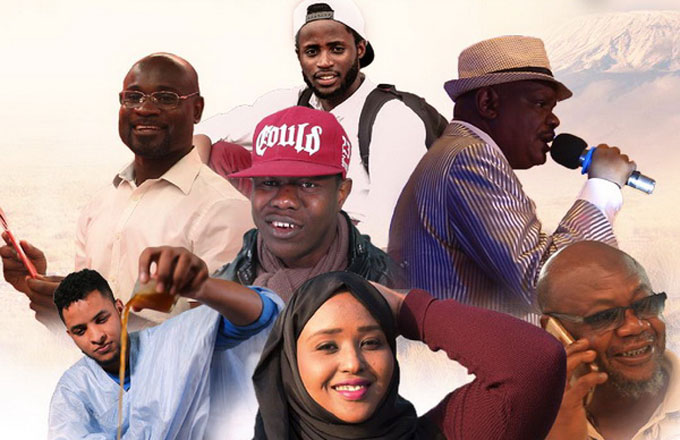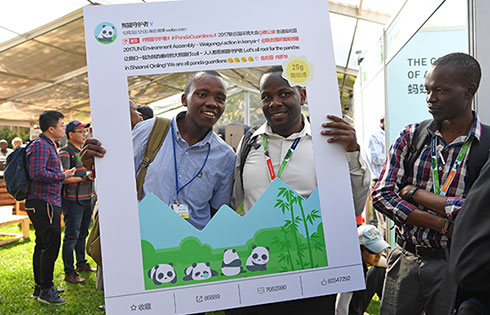Clampdown on Al-Shabaab opens corridors
NAIROBI - Kenya's onslaught on Al-Shabaab in southern Somalia and the intensified clampdown by African Union peacekeepers from the AMISOM mission in the capital Mogadishu have opened new safe corridors for relief delivery to starving Somali fleeing insecurity and fighting.
But humanitarian relief agencies have to contend with new asymmetrical tactics being used by the Al-Shabaab militia group that is blamed for escalating violence and insecurity in the capital and towns that have fallen to Kenya's defense forces in the south.
In its latest update on the refugee crisis in the Horn of Africa, Refugee International, a humanitarian organization supporting refugees, reports starvation and an upsurge of waterborne disease during the current long rains season.
"In Mogadishu, non-traditional donor countries have created much- needed new streams of assistance. However, their inexperience in aid distribution and coordination is resulting in vast disparities in the delivery of aid," the report says.
"Informal and unmanaged internally displaced persons (IDP) sites inside the capital have become breeding grounds for waterborne diseases. And throughout Somalia, ongoing violence, banditry, and food shortages have trapped people who have nothing left, and nowhere to flee," the organization said.
The situation is not expected to improve until probably towards the end of 2012.
"Food production in Somalia will not return to normal levels until the end of 2012 at the earliest. Rising insecurity inside Somalia and Kenya is impeding the delivery of humanitarian aid while greater numbers of Somalis are forced to flee violence and hunger," it said.
Since Kenya crossed into Somalia in pursuit of the Al-Shabaab militiamen, its military has been providing food and medical care to starving and ailing locals.
Since Somalia slumped into war, its institutions collapsed making it impossible for mainly poor women and children to access healthcare. Hospitals and health centers in most of Somalia are non-existent.
Only Somalis in refuge camp in neighboring countries or those living along international borders with Kenya and Ethiopia occasionally cross into the neighboring counties for access medical care.
Humanitarian agencies that were providing health services and famine relief were forced to temporarily withdraw their staff, citing insecurity and frequent attacks on their workers.
"Aid workers throughout the region are working to address these critical needs in an environment of increasing insecurity. In Kenya and Somalia, the risk of kidnapping has increased and chronic violence limits staff movement and program delivery," it said.
The UN refugee agency (UNHCR) and seven major implementing partners critical to providing essential services are threatening to halt operations in refugee camps in northern Kenya if their security is not guaranteed.
The threats come in the wake of kidnappings aid and killing of workers with Medicines Sans Frontiers or Doctors Without Borders (MSF) and UNICEF. Insecurity in the camps has escalated after Kenyan Defense Forces declared war on Al -Shabaab.
Scores Kenyan security officers and aid workers have either died or been injured in booby traps set up by the militiamen.
The group is also increasingly resorting to use of improvised explosive device (IEDs) in retaliation to Kenyan assaults that have dislodged them from their positions.
Refugee International reports that the Kenyan operation has created heightened levels of insecurity in the border area that are exacerbating the humanitarian crisis.
Raouf Mazou, deputy director of UNHCR's East Africa and Horn of Africa desk is quoted as saying that the combination of the Kenyan intervention and the threat of aid organizations leaving Dadaab amounted to "a catastrophe..the situation is going to be unstable for some time, especially due to the deployment of Kenyan troops in Somalia."
The situation in the war-torn country gets out of hand by the day with 13 million people in with greater Horn of Africa affected as result of insecurity, according to Refugee International.
"The situation grows more complicated by the day as the onset of rains exacerbates the spread of disease in displacement camps and fighting within Somalia burdens vulnerable populations already suffering from hunger," it says.
"The recent spate of aid worker kidnappings and the November detonation of an improvised explosive device in Dadaab have resulted in the scaling back of non-essential humanitarian programs. Insecurity has also affected UNHCR's ability to interview and register new arrivals and may compound the problem by contributing to the number of unregistered persons in the camp area," it adds.
In Mogadishu, clashes between the African Union peacekeeping force and Al -Shabaab militiamen are reported to a source concern, despite the creation of safe corridors through which the 370,000 internally displaced people spread 300 camps receive humanitarian assistance.
"Most of the sites are informal and unmanaged, or rather'managed' by militia who loot aid and extort what little the IDPs have. Incidents of violence, banditry, and sexual violence are typical, although unreliable data makes the exact prevalence unclear. People on the verge of collapse from starvation and over- exertion continue to arrive at overstretched, under-resourced hospitals," says the Refugee International report.
The capital is nominally under the control of AMISOM and forces loyal to Somalia's Transitional Federal Government.
"However, Al-Shabaab's reversion to more unpredictable, asymmetric tactics, demonstrated by the recent detonations of IEDs and suicide bombings, means that humanitarian access within Mogadishu remains severely constrained," it says.



























